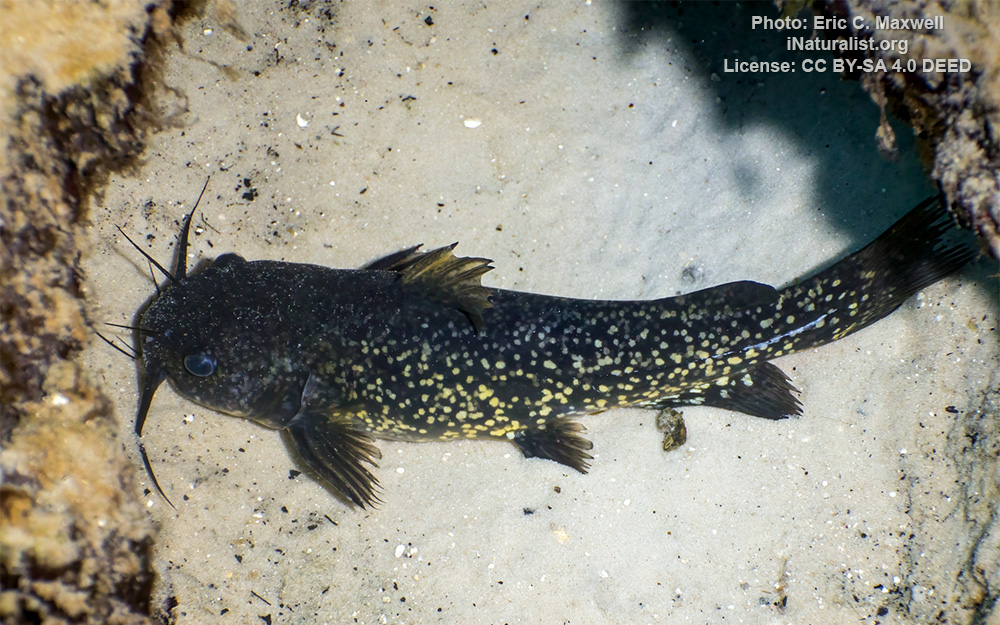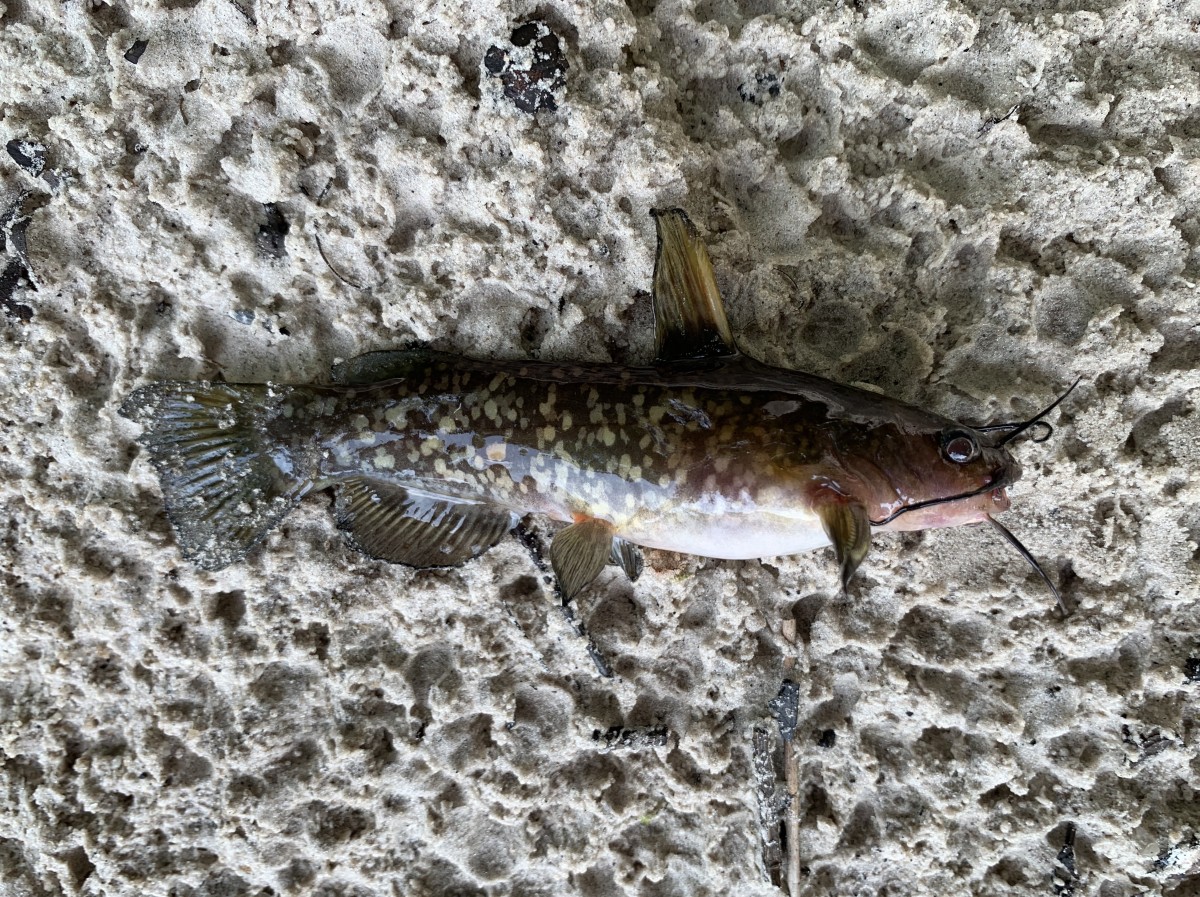Spotted bullhead
(Ameiurus serracanthus)

Image source: Eric C. Maxwell | inaturalist.org
Classification
General data
The spotted bullhead is a small strikingly marked catfish that attains a maximum total length of 23 cm (9 in). It is a member of a group of bullhead species
having a black blotch in the base of the dorsal fin and a relatively large eye. The spotted bullhead is distinguished by profuse, round light-colored spots of pupil-sized diameter on the dark body. The body and fins are suffused with yellow, and the spots thus appear to be yellow. Barbels are dusky to dark. The name serracanthus refers to the strongly serrated pectoral spine which has 6-20 large serrae, or tooth-like projections, on the posterior margin. All the fins are edged in black, and the caudal fin is moderately emarginate.
Similar Species: The spotted bullhead is often confused with the snail bullhead (Ameiurus brunneus); both species have a large eye, dorsal fin blotch, and a mottled coloration pattern. The snail bullhead has much smaller pectoral serrae, lighter colored chin barbels, less distinct spotting, and typically has fewer anal rays (17-20 vs. 19-23) than the spotted bullhead.
Habitat: The spotted bullhead is known from mainstem and large tributaries. It prefers rocky substrates with moderate currents, and has been collected occasionally over mud near vegetation or other structures such as old stumps in impounded portions of rivers.
Threats: Bullhead catfishes are extremely vulnerable to predation by introduced species of large catfishes, such as flathead and blue catfish. Both of these species have been introduced into the Flint and Chattahoochee River systems. Population fragmentation is also a threat, particularly in heavily impounded Chattahoochee River. The removal of dead-head logs would negatively impact the habitats utilized by this species.
Range includes the Gulf Coastal Plain below the Fall Line from the Suwannee River to the Yellow River, in northern Florida, southern Georgia, and southeastern Alabama, USA (Page and Burr 2011); occurs in the lower Chattahoochee River in Alabama; the lower Flint, Withlacoochee, and Alapaha Rivers in Georgia; and an isolated segment of the Yellow River, most of the Choctawhatchee River, the upper Chipola River, the lower Apalachicola River, most of the Ochlockonee River, and most of the Suwannee and Santa Fe Rivers in Florida.













